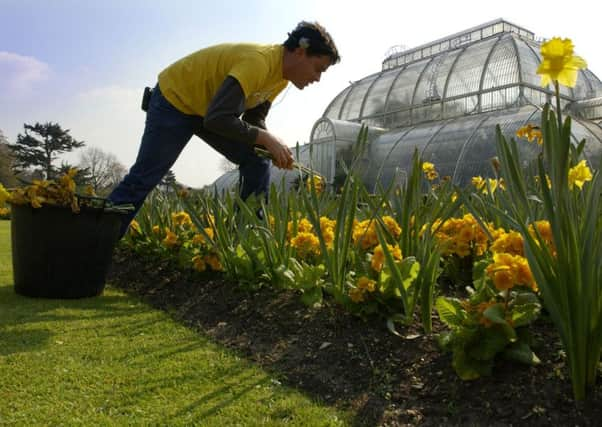Ilona Amos: Preserving plantlife playing vital role for future


We know that rising temperatures and increasingly chaotic weather conditions caused by the build-up of greenhouse gas emissions are driving extinctions, habitat destruction and disease. We also have an exploding population that is demanding ever more food and fuel. All of this is taking an unprecedented toll on the planet’s natural resources.
Nowadays it is widely acknowledged that plants and fungi have a critical role to play in solving some of the present and future global challenges, but it’s not much use if we cannot identify what they are or what they can do. So the release today of a groundbreaking new report assessing the predicament of our plantlife comes not a moment too soon.
Advertisement
Hide AdAdvertisement
Hide AdThe State of the World’s Plants is the 2020 science strategy from the Royal Botanic Gardens Kew. It outlines the global status of plants and presents an annual review of the key issues affecting their diversity and abundance. The publication will also provide new baseline information that will reveal how species are faring and document any changes over time.
Founded in 1759, Kew has to date amassed more than 8.5 million specimens in its scientific collections. Made up of living and preserved items, seeds, spores and genetic material, these represent more than 95 per cent of known flowering plants and around two thirds of fungi. With all this, and a team of more than 250 experts, there is no doubt Kew has got the credentials to develop such an important resource.
The report centres around three main areas – descriptions of the world’s plants, global threats to plantlife, and policies and international trade. It is further broken down into 13 themes, including sections detailing the most recently discovered species and the world’s most important plant areas. It also lists known uses for particular plants and identifies any weaknesses, such as vulnerability to pests and diseases. Case studies are also included to demonstrate a range of predicaments facing plants today, such as sensitivity to climate upheaval. There will also be an up-to-date estimate of the extinction risk facing plants, plus a list of invasive species and the latest data on genetic sequencing.
Since plants provide much of man’s life support system it’s absolutely crucial that we know which ones are useful species for food, fuel, medicine and other vital resources.
Professor Kathy Willis, Kew’s science director, has described the report as a “significant and necessary milestone” for the entire science community. “We are facing some devastating realities if we do not take stock and re-examine our priorities and efforts in answering the bigger questions we face today, from global food security to mitigating the worst impacts of climate change,” she warns.
Such pronouncements make uncomfortable reading, but presented with the facts it is not hard to visualise the sort of worldwide crisis that is looming as a result of our own actions.
It may have been developed in a relatively small country in the northern hemisphere, but the report is destined to have a truly global reach. However, while it presents an assessment of the big picture, it doesn’t overlook the local scale in doing so. It’s a giant undertaking and a valuable one.
Life on earth depends on plants, so let’s hope this new resource can be built upon over time and used for the benefit of all.